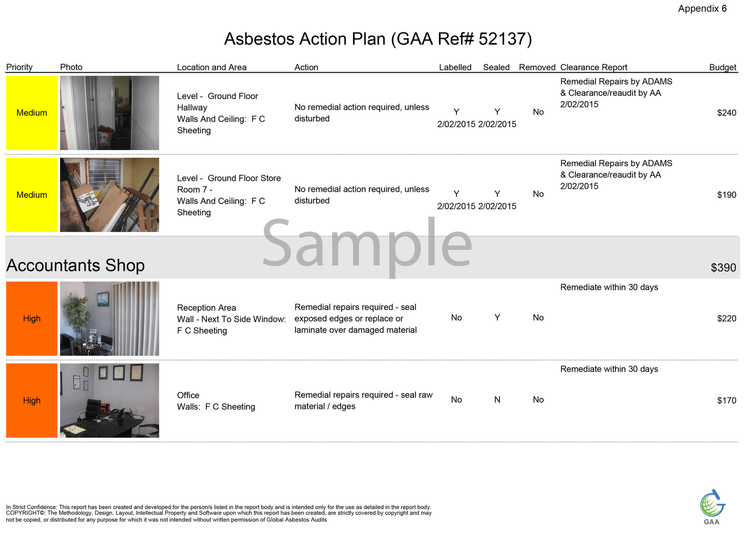An asbestos management plan is a legal requirement for Australian workplaces containing asbestos or asbestos-containing materials (ACMs). This comprehensive document serves as your organisation’s roadmap for safely managing asbestos risks, protecting workers, and ensuring compliance with workplace health and safety regulations.
What is an Asbestos Management Plan?
An asbestos management plan is a written document that identifies, assesses, and outlines procedures for managing asbestos-containing materials in your workplace. Under Australian Work Health and Safety (WHS) legislation, any person conducting a business or undertaking (PCBU) must develop and maintain an asbestos management plan if asbestos is present or likely to be present in their workplace.
The plan serves as a living document that guides decision-making around asbestos safety, from routine maintenance activities to emergency response procedures. It must be regularly reviewed and updated to reflect changes in the workplace or new information about asbestos locations.
Legal Requirements for Asbestos Management Plans
Australian WHS laws mandate that workplaces with asbestos or suspected asbestos must have a current asbestos management plan. This requirement applies to various settings including office buildings, factories, schools, hospitals, and residential properties used for business purposes.
The plan must be developed before any work begins that might disturb asbestos-containing materials. Failure to maintain an adequate asbestos management plan can result in significant penalties, including substantial fines and legal liability for workplace injuries.
Key legal obligations include ensuring the plan is accessible to workers, regularly reviewed for accuracy, and updated when new asbestos is discovered or when workplace conditions change.
Essential Components of an Effective Asbestos Management Plan
Asbestos Register and Location Mapping
Your asbestos management plan must include a comprehensive asbestos register that documents all known and suspected asbestos-containing materials in your workplace. This register should specify exact locations, types of asbestos materials, their condition, and any associated risks.
Detailed floor plans and photographs help workers quickly identify asbestos locations. The register must be easily accessible to all workers and contractors who might encounter asbestos during their duties.
Risk Assessment and Control Measures
The plan must include a thorough risk assessment for each identified asbestos-containing material. This assessment considers factors such as the material’s condition, friability, accessibility, and potential for disturbance during normal workplace activities.
Based on these assessments, your asbestos management plan should outline specific control measures for each asbestos location. These might include restricted access zones, warning signage, air monitoring protocols, and procedures for safe work practices around asbestos materials.
Maintenance and Inspection Procedures
Regular inspection and maintenance protocols form a crucial component of any asbestos management plan. The document should establish schedules for routine asbestos inspections, outline procedures for reporting damaged or deteriorating materials, and specify who is responsible for each aspect of asbestos management.
Maintenance procedures must prioritise minimising asbestos disturbance while ensuring workplace safety. This includes guidelines for minor repairs, cleaning procedures, and protocols for when professional asbestos removal becomes necessary.
Emergency Response Procedures
Your asbestos management plan must include clear emergency response procedures for accidental asbestos disturbance or exposure incidents. These procedures should outline immediate containment measures, evacuation protocols, notification requirements, and steps for professional assessment and cleanup.
Emergency contacts, including licensed asbestos removalists and occupational health specialists, should be readily available within the plan. All workers must understand their roles during an asbestos emergency.
Developing Your Asbestos Management Plan
Professional Asbestos Audits
Creating an effective asbestos management plan begins with a comprehensive asbestos audit conducted by qualified professionals such as Global Asbestos Audits. This audit identifies all asbestos-containing materials in your workplace, assesses their condition, and provides the foundation for your management strategies.
Professional auditors use specialised equipment and sampling techniques to detect asbestos that might not be visible during routine inspections. Their expertise ensures your asbestos management plan is based on accurate, complete information about asbestos presence and risks.
Stakeholder Consultation
Developing your asbestos management plan should involve consultation with workers, health and safety representatives, and other relevant stakeholders. This collaborative approach ensures the plan addresses practical workplace realities and gains support from those who will implement its procedures.
Regular consultation also helps identify potential asbestos risks that might not be apparent during formal assessments, such as areas where maintenance activities frequently occur or where building modifications are planned.
Documentation and Record Keeping
Your asbestos management plan must be properly documented and maintained as a controlled document. This includes version control, distribution records, and tracking of plan updates and reviews. All asbestos-related activities, including inspections, maintenance, and incident reports, should be systematically recorded.
Comprehensive documentation demonstrates compliance with legal requirements and provides valuable historical information for future asbestos management decisions.
Implementing Your Asbestos Management Plan
Training and Communication
Successful implementation of an asbestos management plan requires comprehensive training for all workers who might encounter asbestos during their duties. This training should cover asbestos identification, safe work practices, emergency procedures, and reporting requirements.
Communication strategies should ensure all workers understand the location of asbestos in their workplace and know how to access the asbestos management plan when needed. Regular refresher training maintains awareness and compliance with asbestos safety procedures.
Monitoring and Review
An effective asbestos management plan includes regular monitoring and review processes to ensure ongoing effectiveness. This involves scheduled inspections of asbestos-containing materials, review of incident reports, and assessment of whether control measures remain adequate.
The plan should be formally reviewed at least annually or whenever significant workplace changes occur. This review process ensures the asbestos management plan remains current and continues to provide effective protection for workers.
Contractor Management
Your asbestos management plan must address how contractors and visitors will be informed about asbestos presence and safety requirements. This includes induction procedures, permit systems for work that might disturb asbestos, and verification that contractors have appropriate training and licensing.
Clear communication protocols ensure that all persons entering your workplace understand asbestos risks and comply with established safety procedures.
Common Compliance Issues and Solutions
Many organisations struggle with maintaining current asbestos registers, particularly in older buildings where renovation and maintenance activities may have disturbed or removed asbestos materials. Regular professional audits help identify these changes and ensure your asbestos management plan remains accurate.
Another common issue involves inadequate training and communication about asbestos locations and safety procedures. Investing in comprehensive training programs and clear communication systems significantly reduces the risk of accidental asbestos exposure.
Poor documentation and record keeping can also create compliance problems. Implementing systematic documentation procedures and regular review processes helps maintain the integrity of your asbestos management plan.
Professional Support for Asbestos Management

Developing and maintaining an effective asbestos management plan requires specialised expertise and ongoing professional support. Qualified asbestos auditors at Global Asbestos Audits can provide the technical knowledge needed to create comprehensive management strategies that protect workers and ensure regulatory compliance.
Professional support also includes regular plan reviews, updated risk assessments, and guidance on emerging asbestos management best practices. This ongoing relationship ensures your asbestos management plan continues to meet evolving workplace needs and regulatory requirements.
An asbestos management plan is essential for any Australian workplace where asbestos is present or suspected. This comprehensive document protects workers, ensures legal compliance, and provides a systematic approach to managing asbestos risks.
Effective asbestos management requires professional expertise, ongoing monitoring, and commitment to maintaining current, accurate documentation. By investing in a well-developed asbestos management plan, organisations can confidently manage asbestos risks while meeting their legal obligations.For expert assistance in developing or reviewing your asbestos management plan, contact Global Asbestos Audits. Our qualified professionals provide comprehensive asbestos auditing services and can help ensure your workplace meets all regulatory requirements for asbestos safety.

